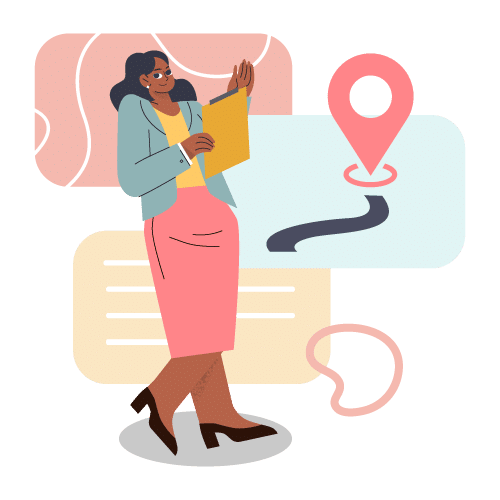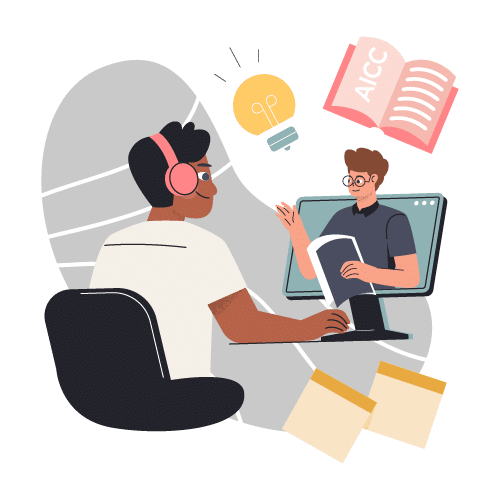CLOs take on a wide variety of tasks across their respective organizations, but ultimately they are responsible for developing a framework for organizational learning, culture, and internal growth. These are big tasks with big expectations, and the CLO now plays a critical role in shaping organizations for the future. It may seem daunting at first, but with the right framework, CLOs can thrive in their pursuit of building leading learning programs.
Organizations of all types are transforming through technology innovation, internal change resulting from the global pandemic, and a renewed awareness about the importance of developing a learning culture. For CLOs, this transformation means re-evaluating legacy methods of organizational learning and dismantling ineffective methods and programs. It also means defining a vision and establishing—in relative short order—a new framework that enables a true culture of learning.
In our new ebook, A Comprehensive Guide to Your First 100 Days as a CLO, we make the analogy that the first 100 days as a CLO requires navigation and course-correcting in the same way the captain of a ship maneuvers a vessel from stormy waters into the calm of a port. And what do captains often have to do to get on the right track? They start by bailing water. Once the decks are clear, only then can they chart the right course.
The idea of the first 100 days as a CLO might seem daunting, but our ebook outlines specific actions as well as general guidelines to help launch you in your new role with purpose and mission. And, yes, while you might start out bailing water, the rest of the journey consists of exploration and planning. It includes organizational evaluation, needs assessment, planning for the future, and finding the right internal and third-party partners to help you execute your plan.
Download our ebook to get the complete plan, but here’s a snapshot to give you a sense of what your 100-day plan should include:
Out with the old…
“If it ain’t broke, don’t fix it.” Well, chances are you were hired for this job because either something was broken, or you’re just incredibly gifted at improving things. Either way, it’s time to get to work!
Hopefully you have some waterproof boots, because at this stage, bailing water is key. Something wasn’t working previously—it might have been the wrong technology (or lack of technology), misalignment with company values or goals, or it might have just been inertia on the part of stakeholders. Start by plugging the holes, which might include eliminating outdated or ineffective training programs, and then observe the current organizational culture and attitudes towards learning.
Getting started as a CLO includes a mix of bold decision-making and sitting back and learning. These efforts are just the beginning, but they lay a critical foundation for what’s ahead.
Get to know the landscape
Remember that the work you do is for the benefit of the employees in your organization. The best place to start, therefore, is with those employees. Ask questions and dig deep to learn what hasn’t worked in the past and what they think can work in the future.
This is where you can begin to demonstrate that you’re a change agent—by showing you’re a good listener. Consider this a “learning roadshow” as you move around to different parts of the organization and talk with people at all different levels. As you learn from them, create a framework for the possibilities of what you need to develop. This will be time well spent, as you’ll learn the pain points the company has been experiencing and you’ll come away with a sense for who your internal champions can be.
Time for the whiteboard
At this point, you’re a few weeks into your new role and you’ve learned quite a bit. You’ve had input from across the company, and you’ve had many opportunities to evaluate the good and bad. Now is the time to test the waters.
For one thing, you’ll want to be clear on expectations from your enterprise’s leaders. This will enable you to gauge your target outcomes with precision. It will help you identify areas for improvement that you need to address, as well as obstacles you may not want (or need) to tackle. You will also want to prioritize your project goals based on what you’ve learned thus far.
This is a time for brainstorming, and you should approach it with flexibility—at this point, there are no wrong answers, but you’re probably getting a lot closer to the best answers.
Mind the gaps
…and fill them! However, consider that this isn’t just about knowing what’s needed and immediately putting a plan into place. It’s about whittling away at ideas and concepts that won’t work, and focusing your efforts on high-impact activities that will achieve demonstrable benefits for your organization.
As you will have spent considerable time listening and ideating, you’ll have a great sense for what will and won’t work in your organization. Trust yourself; you’ve done a ton of due diligence and it’s going to pay off.
Choose your first mate
The final part of our new ebook goes into detail about how to execute on your proposed strategy and how to identify the right partner to help you achieve your goals.
We invite you to check out A Comprehensive Guide to Your First 100 Days as a CLO and see how you can navigate your way to building a market-leading learning culture for your organization.





